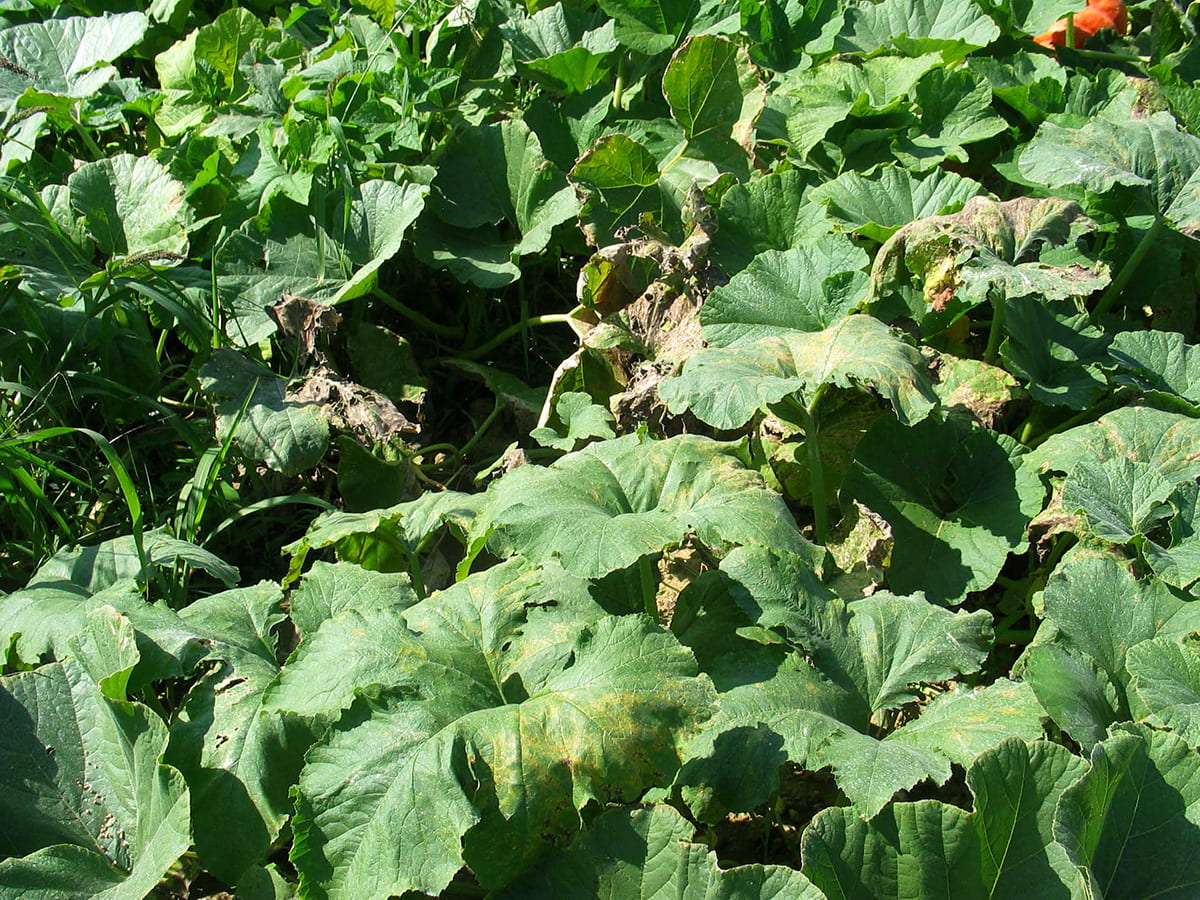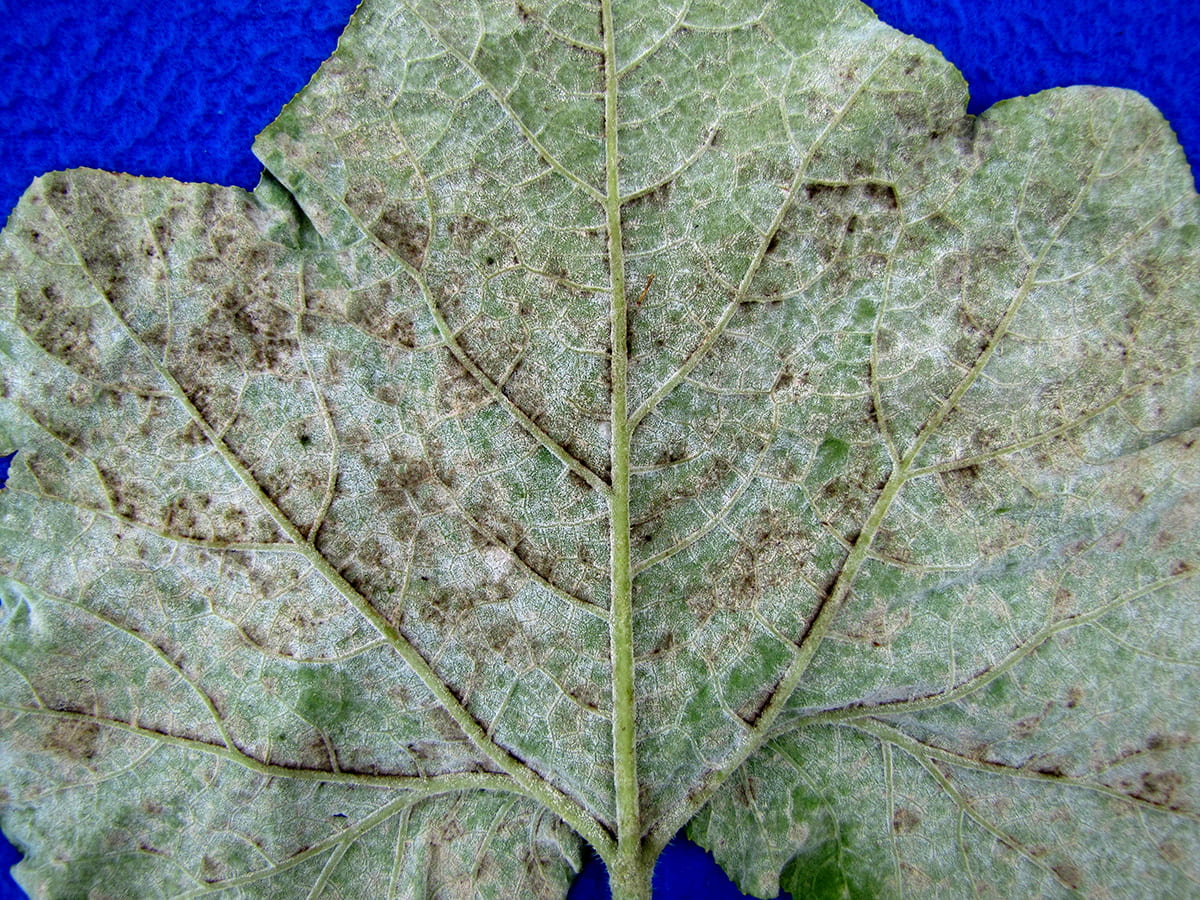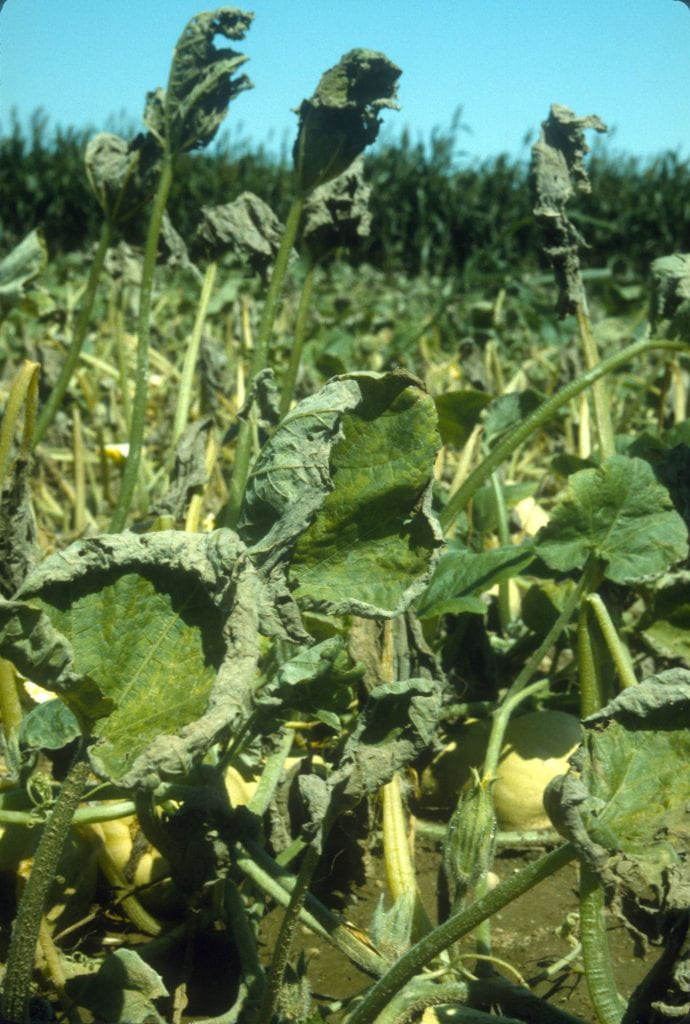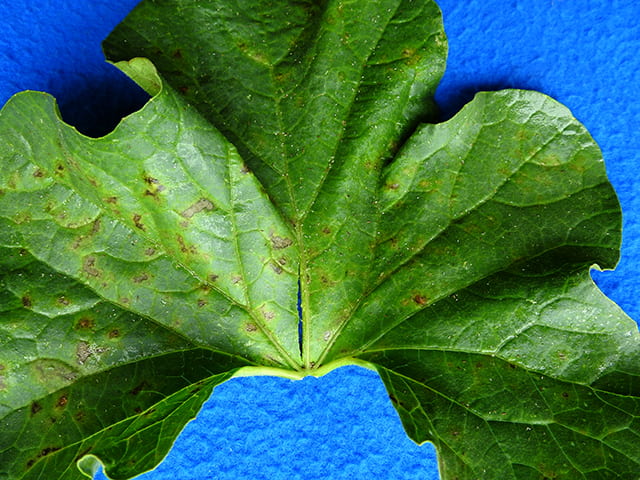- Downy mildew on cucurbits: Early symptoms
- Downy mildew of cucumber and other cucurbit plants
- More information
Pumpkin (below): Yellow to orange spots develop on the upper surface of leaves. Affected tissue can quickly turn brown and die. On the underside of leaves opposite these spots the pathogen produces dark spores. As the downy mildew pathogen grows inside a leaf it often cannot progress through vein tissue, thus symptoms typically are angular in shape. When not suppressed by fungicides, downy mildew can kill leaves and cause plants to die prematurely resulting in rotten pumpkin handles after the vine dies.
Imitator (below): Saprophytic fungi attacking old powdery mildew growth produce dark spores that can be confused for the downy mildew pathogen. In contrast with downy mildew, the saprophytic growth occurs more generally on the leaf rather than in defined, typically vein-delimited spots and there are no leaf spot symptoms on the upper leaf surface.
Cucumber (below): Downy mildew occurs most commonly on this cucurbit crop type and typically is easiest to identify on it because leaf spots often have an angular appearance and the pathogen typically produces spores abundantly on the lower surface creating a fuzzy appearance.
Upper leaf surface:
Lower leaf surface:
Butternut squash (below): Leaf spots due to downy mildew typically are brown and often have an angular shape where leaf veins limited pathogen growth inside the leaf. Close examination may be needed to see the angular shape especially before they turn brown. Also typical with this cucurbit crop type is abundant production of brown spores on the underside of leaves opposite the spots. Observing spores is diagnostic thus it is necessary to look at the underside of leaves to confirm spots are due to downy mildew. Angular-shaped spots also can be due to bacteria that cause angular leaf spot Morning is the best time to look for symptoms of downy mildew because spores, which are produced over night, will be most visible then.
Left unmanaged, downy mildew can rapidly kill leaf tissue. Petioles are not affected thus leaves remain upright appearing like they were killed by frost. Fruit on plants defoliated prematurely will not have have as good flavor and will not store as well as fruit that matured on healthy plants.
Cantaloupe (below): Downy mildew can be difficult to identify on this cucurbit crop type because leaf spots rarely are angular and typically so few spores are present that they cannot be seen with the unaided eye. These leaves were collected at the same time as the cucumber leaf on this page with abundant sporulation.
Watermelon (below): Dark brown leaf spots caused by downy mildew are irregular in shape. Leaves die prematurely when fungicides are not applied. The pathogen produces few spores on the underside of leaves, even following 1-day incubation in high humidity (inside plastic bag on wet paper towel); therefore, presence of fuzzy pathogen growth cannot be used to diagnose downy mildew in watermelon as it can in other cucurbit crop types (in particular cucumber and butternut squash). Watermelon tends to be less commonly affected than other cucurbit crop types. Images below were taken in 2013. Symptoms appeared on watermelon very early in the 2015 growing season in the northeastern US.






















